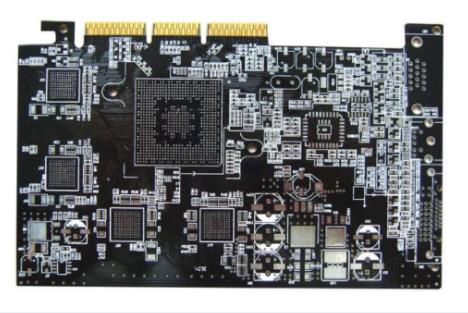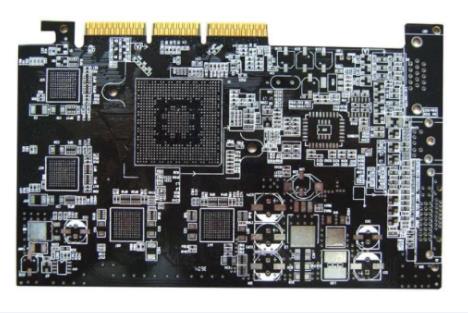
How to establish flexible stack with controllable impedance
Impedance is a measure of the current limit imposed by a circuit It is similar to a resistor, but it also takes into account the effects of inductance and capacitance Impedance control in flexible stacks is essential to reduce signal reflection and achieve reliable signal integrity
Controlled impedance (CI) is the characteristic impedance of the transmission line in the PCB wire and its related datum plane It is especially needed when high frequency signals propagate through circuit board traces
Why do we need to control flexible PCB?
In modern times, flexible circuit boards become smaller, faster and more complex. Flexible boards are commonly used in high-frequency applications, such as RF communications, telecommunications, computing using signal frequencies above 100MHz, high-speed signal processing, and high-quality analog video, such as DDR, HDMI, Gigabit Ethernet, etc.
The signal path has impedance at each point in the signal path. If the impedance point is different from that point, there will be signal reflection, and the amplitude of reflection depends on the difference between the two impedances. This reflection will travel in the opposite direction to the signal, which means that the reflected signal will be superimposed on the original signal. In order to better understand the controlled impedance reading, why is the controlled impedance really important?
What is impedance matching in PCB?
Circuit board

When it comes to flexible PCB designs, impedance matching becomes critical because they are often used for high-speed applications. It means matching the load impedance with the characteristic impedance of the transmission line. If the load impedance and characteristic impedance are equal, the reflection in the transmission line will be eliminated. This ensures that the reception of the original signal is not attenuated.
Factors Affecting the Impedance of Flexible Circuit Boards
By changing the physical size of PCB traces and the characteristics of the dielectric materials used, flexible impedance control can be achieved. The following factors affect the impedance of flexible PCB.
Physical size of the track
Track height
Width of track top
Width of trace bottom
Width difference between the top and bottom of the track
Height of track from ground plane
Dielectric efficiency of dielectric materials used
Dielectric constant of added dielectric material
Dielectric height between locus and reference plane
Dielectric constant of welding mask or covering layer
Controlled impedance configuration of flexible plate
The most common configurations of flexible plate impedance control are:
Single ended microstrip
How to establish flexible stack with controllable impedance
Single ended microstrip line for flexible PCB
H1: dielectric height between locus and reference plane
W1: Width at the bottom of the track
W2: Width of track top
T1: track thickness
Er1: dielectric constant between locus and reference plane
The outer layer of the circuit board stack is provided with a transmission line made of uniform conductors (thickness and width). The reference plane provides a current return path for signals transmitted on the transmission line. Single ended microstrip lines allow a thinner flexible structure, which also adds flexibility and reduces overall costs.
Edge coated differential microstrip line
Edge coupled differential microstrip line for flexible PCB
H1: dielectric height between locus and reference plane
W1: Width at the bottom of the track
W2: Width of track top
T1: track thickness
S1: interval between two traces of differential pair
C1, C2 and C3: overburden thickness at different locations
CER: dielectric constant of the coating
When the signal and its complement are transmitted on two independent traces, they are called differential signals. These tracks are called differential pairs. Tracks are routed at constant intervals. One of the main advantages of edge coupled differential pairs is that the noise on the reference plane is common to both traces. This cancels out the noise at the receiver.
Single ended stripline
How to establish flexible stack with controllable impedance
Single ended stripline of flexible PCB
H1: Height of the first dielectric
H2: height of the second dielectric layer
W1: Width at the bottom of the track
W2: Width of track top
Er1: dielectric constant of the first dielectric
Er2: dielectric constant of the second dielectric
T1: track thickness
It realizes signal routing between two ground planes in a network by multi-layer PCBs The return path of high frequency signal is located above and below the signal track on the plane
Edge coupled differential stripline
How to establish flexible stack with controllable impedance
Edge coupled differential stripline for flexible PCB
H1: Height of the first dielectric
H2: height of the second dielectric layer
W1: Width at the bottom of the track
W2: Width of track top
Er1: dielectric constant of the first dielectric
Er2: dielectric constant of the second dielectric
T1: track thickness
S1: interval between two traces of differential pair
This configuration consists of two controlled impedance trajectories sandwiched between two planes. It is similar to a single ended stripline. The only difference is that it has a pair of conductors separated by a uniform distance.
Cross hatch reference plane in flexible PCB
The ratio of the conductor width (HW) to the distance between crosshatch (HP) plays an important role in representing the crosshatch plane. If the ratio is about 0.293, 50% copper removal can be achieved. The smaller the ratio, the higher the copper removal rate. Compared with rigid copper plane, the only disadvantage of flexible control impedance is that it needs higher control impedance value.
The cross hatched datum plane means that a large proportion of copper has been removed from the plane. It has a significant impact on the controlled impedance in flexible PCBs. The cross hatch plane cannot provide 100% mask for the signal trace. The main purpose of the cross hatch datum is to increase the flexibility of the circuit board.
The impedance control in flexible design requires a flexible core thicker than the standard flexible core to achieve the required impedance value. The thicker flexible core increases the total thickness and reduces the bendability.
The surface microstrip consists of a flexible core as thin as possible, providing maximum flexibility. The stripline configuration allows masking on either side of the track. However, this configuration significantly increases the deflection thickness, thereby reducing the deflection capacity.
The flexible board is usually made of a polyimide substrate. These substrates have low Dk values (3 to 3.5) compared to the rigid data. The thickness of flexible data is always uniform. This makes it an ideal choice for flexible impedance control design.
There are two types of polyimide information: adhesive based information and adhesive free information. Both adhesive free and adhesive based information can be used for flexible CI design. However, due to their consistent results, no binder information is more suitable for high-speed applications.
Teflon, Teflon and other advanced materials/Polyimide hybrid materials are suitable for high speed applications These data are more expensive than those of polyimide Standard adaptive free polyimide material meet the design requirements of controlled impact while reducing costs Sierra Circuits uses DuPont data flexible PCBs
Controlling impedance is one of the key factors to minimize signal reflection in PCB.







